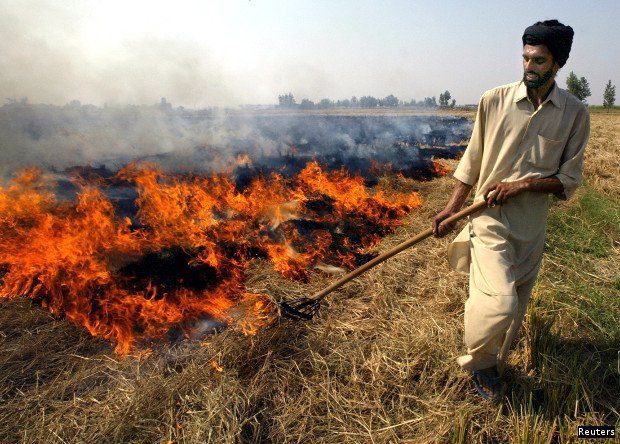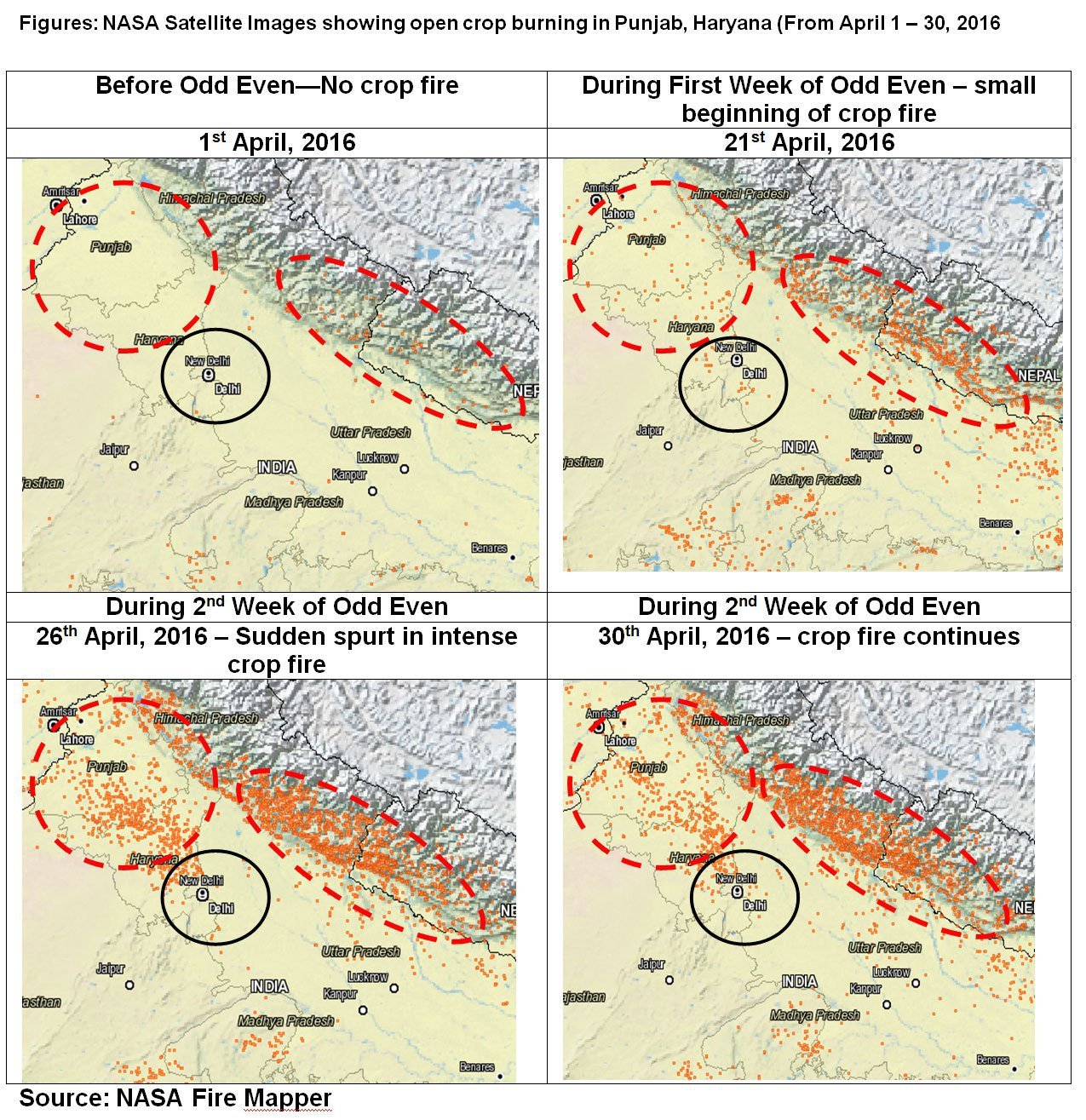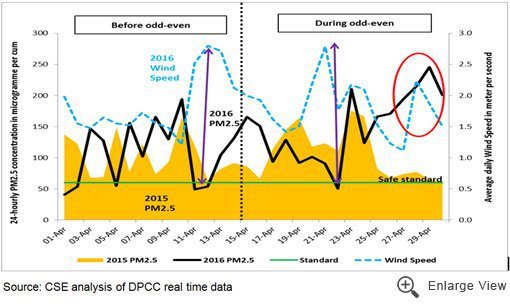air pollution dropped during first 10 days of the scheme but suddenly increased April 23 onwards.”
Did the second phase of Odd-Even formula from April 15 to April 30 reduce pollution level in Delhi?

The Reason?Crop-burning across Punjab and Haryana and forest fires in Uttarakhand.
So what else did CSE study find?
- According to the study, the second phase of odd-even phase did bring down the pollution levels in the first ten days.
The study notes:
“Between April 15 and April 23 PM2.5 (particulate matter) levels declined substantially compared to the previous fortnight. The average PM2.5 level during the first nine days was 24 per cent lower than the average of the previous fortnight.”
- In the period between April 23-30, the study found a spike in the PM2.5 and Nitrogen Oxide (N02) levels not only in Delhi but key north Indian cities like Faridabad, Agra and Lucknow.

- The PM2.5 level level in this period increased by 92 per cent and NO2 showed an increase by 47 per cent.
- Delhi’s Air Quality Index worsened by 16 per cent during the same period.
- Analysis of the NASA satellite imagery by CSE found that “before the odd-and-even scheme and during the first few days, there was virtually no crop fire in Punjab and Haryana. But April 21 onwards, there was a sudden spurt in crop fires that became widespread and intense from April 23 onwards. April 26 was particularly bad.”

- Countering claims made in media on the basis of certain studies which showed the pollution levels in Delhi had risen during the odd-even phase, the study also noted the impact of Uttarakhand forest fires on the quality of air.
- The findings of CSE have also taken a dig at the claims of opponents of Odd-Even scheme, who are of the belief that vehicles are not the cause of polluting the capital’s air.
- In an interesting observation, the CSE study states the poor analysis of air quality leads to “irresponsible interpretation by the industry.” It also mentions that the results of these studies act as a ground for auto industry in front of Supreme Court for absolving vehicles of being a contributor to the pollution.
Feature image source: PTI/Representational Image
Top picks for you

















